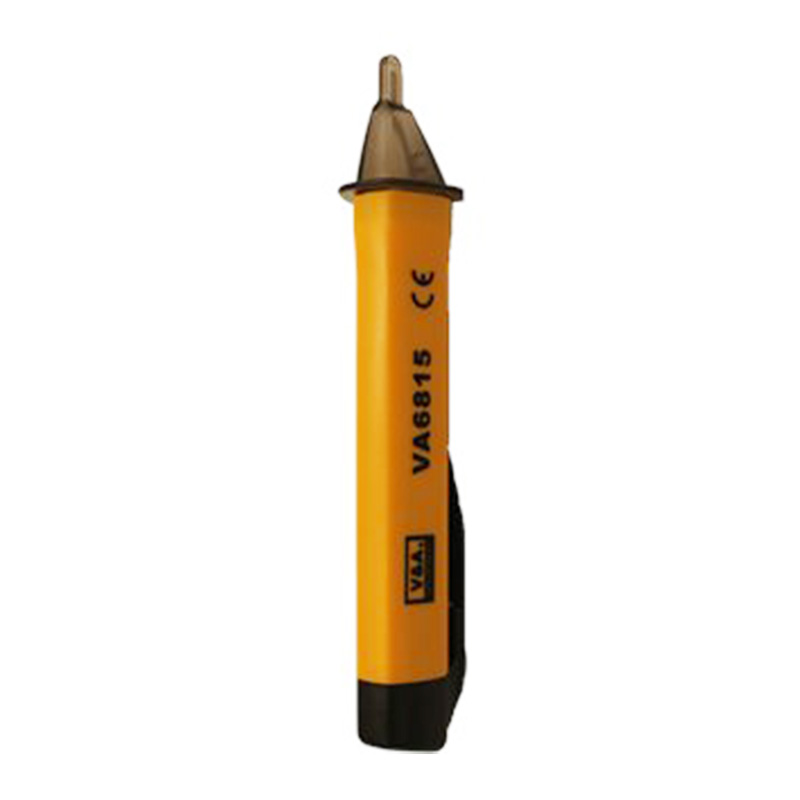


The VA6815 is a non-contact voltage detector with an integrated flashlight. The voltage sensor detects 50 to 1000V AC and indicates the presence of voltage in cables, cords, circuit breakers, light fixtures, switches, outlets and wires as well as AC voltage in doorbells,thermostats, low voltage lighting and irrigation systems. Includes both visual and audible signals.
This non-contact voltage detector can be used for home appliance repair, circuit inspection and DIY. It’s a perfect tool for home users, electrical and electrical system engineers, etc.
| VA6815 | |
| Voltage range | up to 1000V |
| Voltage sensitivity | 100 to 240V AC |
| Frequency | 50/60Hz |
| Detection distance | <5mm |
| Operation temperature | 0-55℃ |
| Storage temperature | -20-60℃ |
| Humidity | <85%RH |
| Power | AAAX2 |
| Differentiate live wire and neutral wire |
This non-contact voltage detector can be used for home appliance repair, circuit inspection and DIY. It’s a perfect tool for home users, electrical and electrical system engineers, etc.
1, keep the tester dry. If it gets wet, wipe it off.
2, use and store the tester in normal temperatures. Temperature extremes can shroten the life of the electronic parts and distort or melt plastic parts.
3, Handle the tester gently and carefully. Dropping it can damage the electronic parts or the case.
4, keep the tester clean. Wipe the case occasionally with a damp cloth. Do not use chemicals, cleaning solvents, or detergents.
